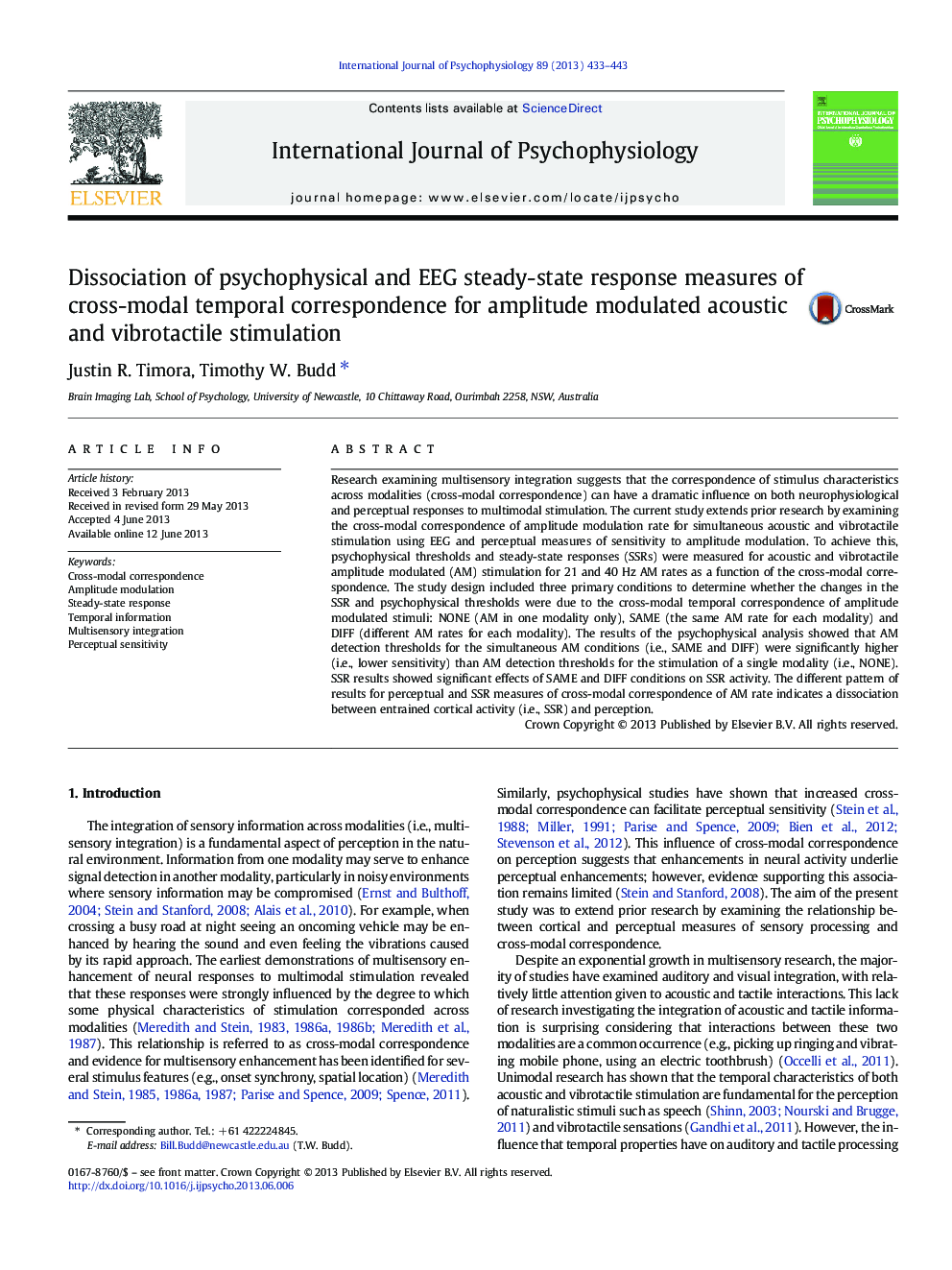| Article ID | Journal | Published Year | Pages | File Type |
|---|---|---|---|---|
| 7295888 | International Journal of Psychophysiology | 2013 | 11 Pages |
Abstract
Research examining multisensory integration suggests that the correspondence of stimulus characteristics across modalities (cross-modal correspondence) can have a dramatic influence on both neurophysiological and perceptual responses to multimodal stimulation. The current study extends prior research by examining the cross-modal correspondence of amplitude modulation rate for simultaneous acoustic and vibrotactile stimulation using EEG and perceptual measures of sensitivity to amplitude modulation. To achieve this, psychophysical thresholds and steady-state responses (SSRs) were measured for acoustic and vibrotactile amplitude modulated (AM) stimulation for 21 and 40Â Hz AM rates as a function of the cross-modal correspondence. The study design included three primary conditions to determine whether the changes in the SSR and psychophysical thresholds were due to the cross-modal temporal correspondence of amplitude modulated stimuli: NONE (AM in one modality only), SAME (the same AM rate for each modality) and DIFF (different AM rates for each modality). The results of the psychophysical analysis showed that AM detection thresholds for the simultaneous AM conditions (i.e., SAME and DIFF) were significantly higher (i.e., lower sensitivity) than AM detection thresholds for the stimulation of a single modality (i.e., NONE). SSR results showed significant effects of SAME and DIFF conditions on SSR activity. The different pattern of results for perceptual and SSR measures of cross-modal correspondence of AM rate indicates a dissociation between entrained cortical activity (i.e., SSR) and perception.
Keywords
Related Topics
Life Sciences
Neuroscience
Behavioral Neuroscience
Authors
Justin R. Timora, Timothy W. Budd,
